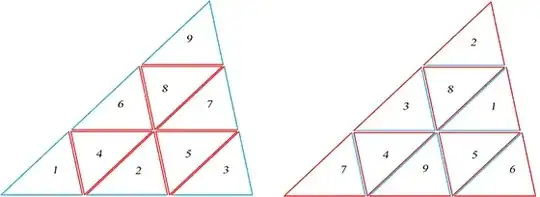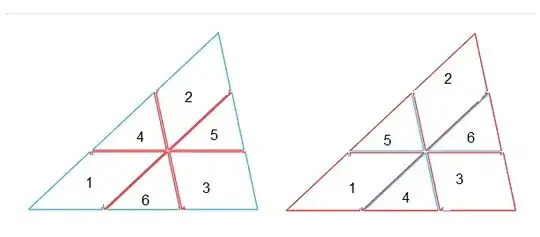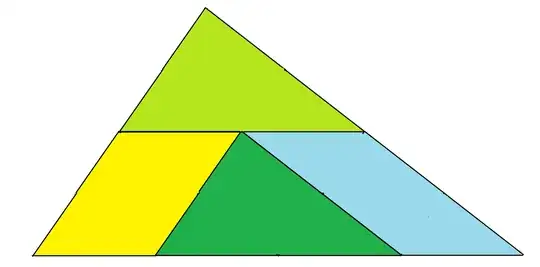A dissection of a polygon $P$ is a partition of $P$ into a finite number of pieces, which can then be rearranged (via planar translations and rotations) and joined (without overlap) to form a new polygon $P'$. Say that a polygon $P$ has an inside-out dissection (my terminology) if $P'$ is congruent to $P$, and the perimeter of $P$ becomes interior to $P'$, and so the perimeter of $P'$ is composed of internal cuts of the dissection of $P$.
I believe every polygon $P$ has an inside-out dissection because (1) $P$ may be triangulated, and (2) every triangle has an inside-out dissection:

One may ask many questions concerning this concept. Here I will confine myself to three:
Q0. Has this notion been explored before, and if so, under what name?
Q1. Is there an inside-out dissection of a generic triangle using fewer than $9$ pieces?
Q2. There is a "$+$" inside-out dissection of any rectangle into $4$ pieces. What is the minimal inside-out dissection of a generic trapezoid?
 .
.

Which polygon P gives an upper bound on the length of cuts (compared to perimeter of P) for an inside out dissection?
How will such an upper bound change if we allow P' to be non-congruent to P - insisting only that the perimeter of P becomes interior to P'?
– Nandakumar R Mar 26 '20 at 15:21